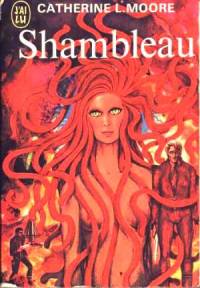

Structure and Significance:
Space Opera
A hybrid of science fiction, horse operas (Westerns) and soap operas, over the last century the space opera subgenre has become an important part of science fiction over (“Space Opera” history). According to Wikipedia.com, a space opera is defined as “speculative fiction or science fiction that emphasizes romantic adventure, exotic settings, and larger than life characters.” (“Space Opera ‘Characteristics’”).
Spaces operas began to emerge in the science fiction genre with the work of E.E. Smith through his pulp magazine stories which combined hard science fiction with fantastic heroes, exploration, and exciting adventures (“E.E. Doc Smith”). These stories were also heavily influenced by the 1920’s-1940’s pirate stories, westerns, and pulp magazines (“Space Opera ‘History’”). Although space operas were not originally considered to be credible literature and were often dismissed as sub-par (Barron 78), Smith and other early writers’ influence helped space operas to become credible space adventures, distinguished by strong character development (“Space Opera ‘Characteristics’”). Ian M. Bank’s Consider Phlebus particularly set a positive standard for space operas by combining wild ideas and colorful characters with “old-fashioned virtues of traditional space opera with unusually high literary standards” (Barron 79). As time progressed, space operas evolved to include more contemporary views of heroes, and now incorporate discussions of extremes, “emotions for emotion’s sake”, cyberpunk-like darkness, ancient settings, and environmental disasters (Barron 80).
Although space operas grew out of science fiction, they are their own independent subgenre, especially when compared to other types of science fiction such as planetary romance, hard science fiction, or military science fiction. Space operas like Hugo Greenback’s Ralph 124C 41+ (Rabkin 233) emphasize travel more than planetary romances like Robert Howard’s “Conan the Barbarian” series (Roberts 256), which highlight the world or lost cultures (“Space Opera ‘Definitions by contrast’”). Because they concentrate more on plot lines and characters rather than science, space operas are soft science fiction. In contrast, the focus of a hard science fiction work like Arthur Clark’s The Star (Rabkin 364) is technical inventions, progress, and scientific laws (“Space Opera ‘Definitions by contrast’”). Finally, as seen in works like Theodore Sturgeon’s “Thunder and Roses” (Roberts 644) or Orson Scott Card’s “Ender’s Game” (970), space operas can use the highly emotional connotations of war to create a character-driven plot. However, they are still separate from military science fiction because they are more concerned with social issues rather than specific military plots or intergalaxal wars (“Space Opera ‘Definitions by contrast’”).

For list of space opera literature, television, stage, and film, please visit Wikipedia.com's "Space Opera" site: http://en.wikipedia.org/wiki/Space_opera#Sample_space_opera_backgrounds
Links
Last Modified 24 April 2006 Created by Julie Rooney julierooney_2009@depauw.edu
Contact me